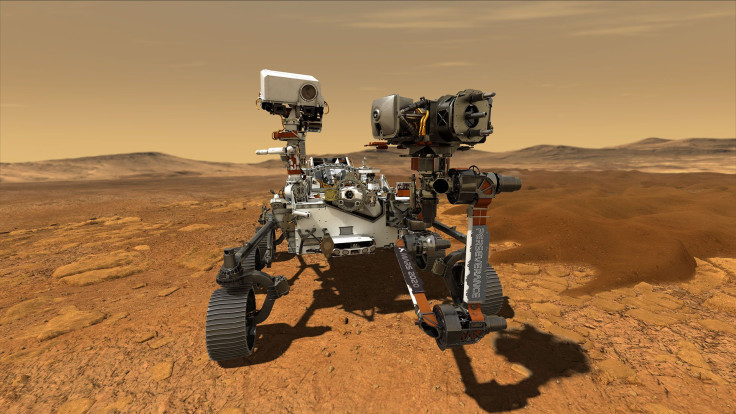NASA Equips Mars 2020 Rover With Sample-Collecting Components

KEY POINTS
- NASA has installed the Perseverance rover's sample-collecting components
- The Mars samples will be analyzed for traces of alien life
- The upcoming mission will help prepare NASA's first human expedition to Mars
NASA has successfully installed and tested two key components that will allow the Mars 2020 rover to collect soil and rock samples from the Red Planet. These samples will be analyzed to check for the presence of alien life.
Known as Perseverance, NASA’s newest rover weighs about 2,300 pounds. It was designed by NASA to study Mars in preparation for a future human mission to the Red Planet.
One of Perseverance’s main objectives is to collect samples from the Red Planet. Once collected, these samples will be stored in a secure location and brought back to Earth through a future mission.
In order to complete its objective, the robotic rover has been equipped with special components designed to collect samples from Mars. The first is the Bit Carousel, which contains the drill bits the rover will use to break off potential samples.
Once the samples have been collected, they will be stored inside the Adaptive Caching System for assessment. This component is powered by seven motors that are working together to process the samples. They also power the component’s Sample Handling Arm, which transfers the samples into tubes to be sealed and stored.
According to NASA, these components, which were installed on the rover and tested on March 11, will work together to allow Perseverance to complete its mission on Mars. By collecting and storing the samples properly, scientists will be able to assess and study them in the future.
Findings from these studies would reveal if Mars contains traces of alien microbial life.
“With the addition of the Adaptive Caching Assembly and Bit Carousel, the heart of our sample collection system is now on board the rover,” Matt Wallace, NASA’s deputy manager for the Mars 2020 mission said in a statement.
“Our final but most crucial elements to install will be the sample tubes that will contain the first samples that will be brought from another planet back to Earth for analysis,” he added. “We will keep these pristine until we integrate them in a couple of months.”
The Mars 2020 mission is part of NASA’s latest spaceflight program known as Artemis. Through the rover Perseverance, NASA aims to collect valuable information regarding the surface of Mars. The information collected during this mission will be used in the planning process for NASA’s first human expedition to the Red Planet.
NASA is targeting to launch the Mars 2020 mission on July 17. It is expected to reach Mars and its target destination, the Jezero crater, on Feb. 18, 2021.
© Copyright IBTimes 2025. All rights reserved.





















